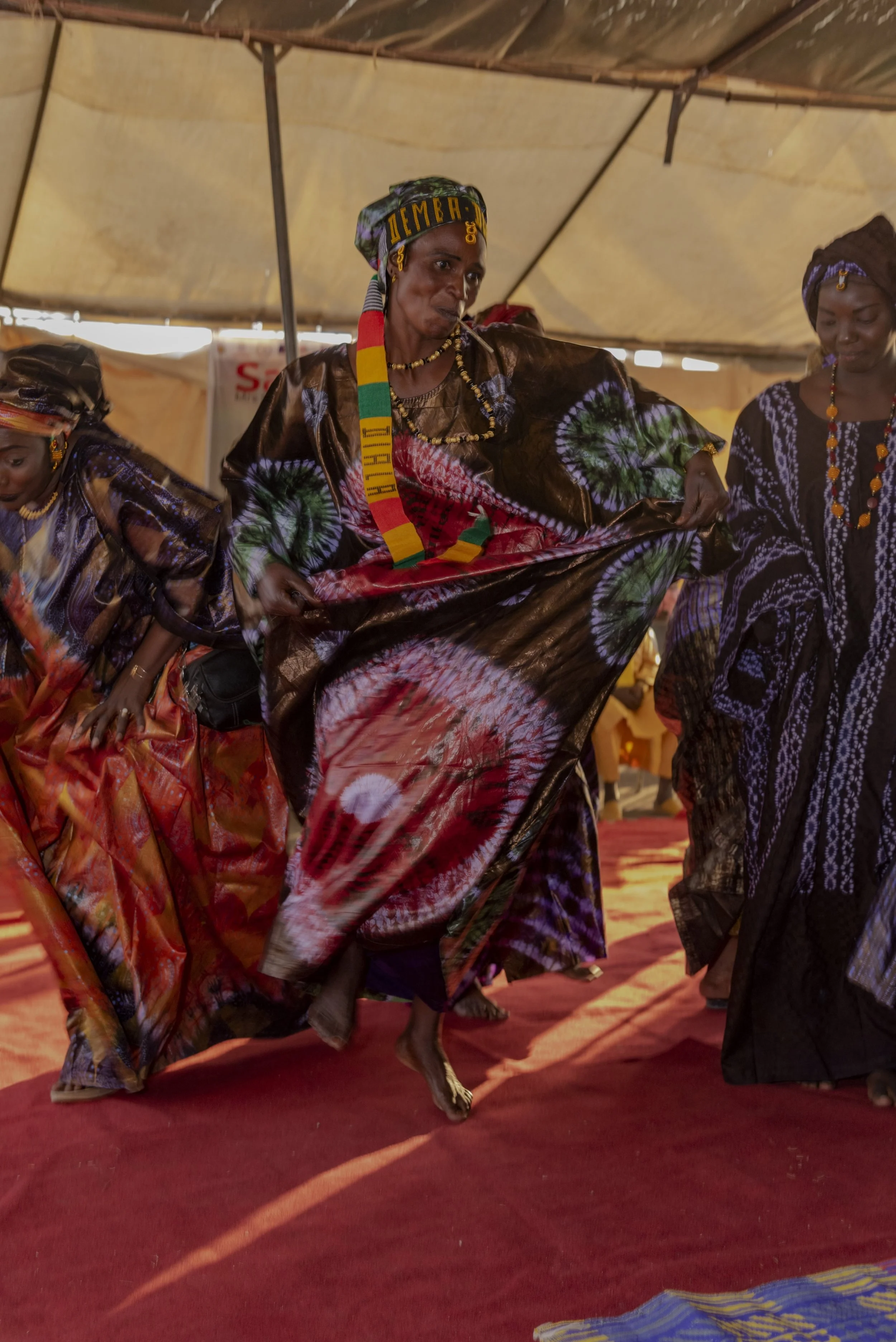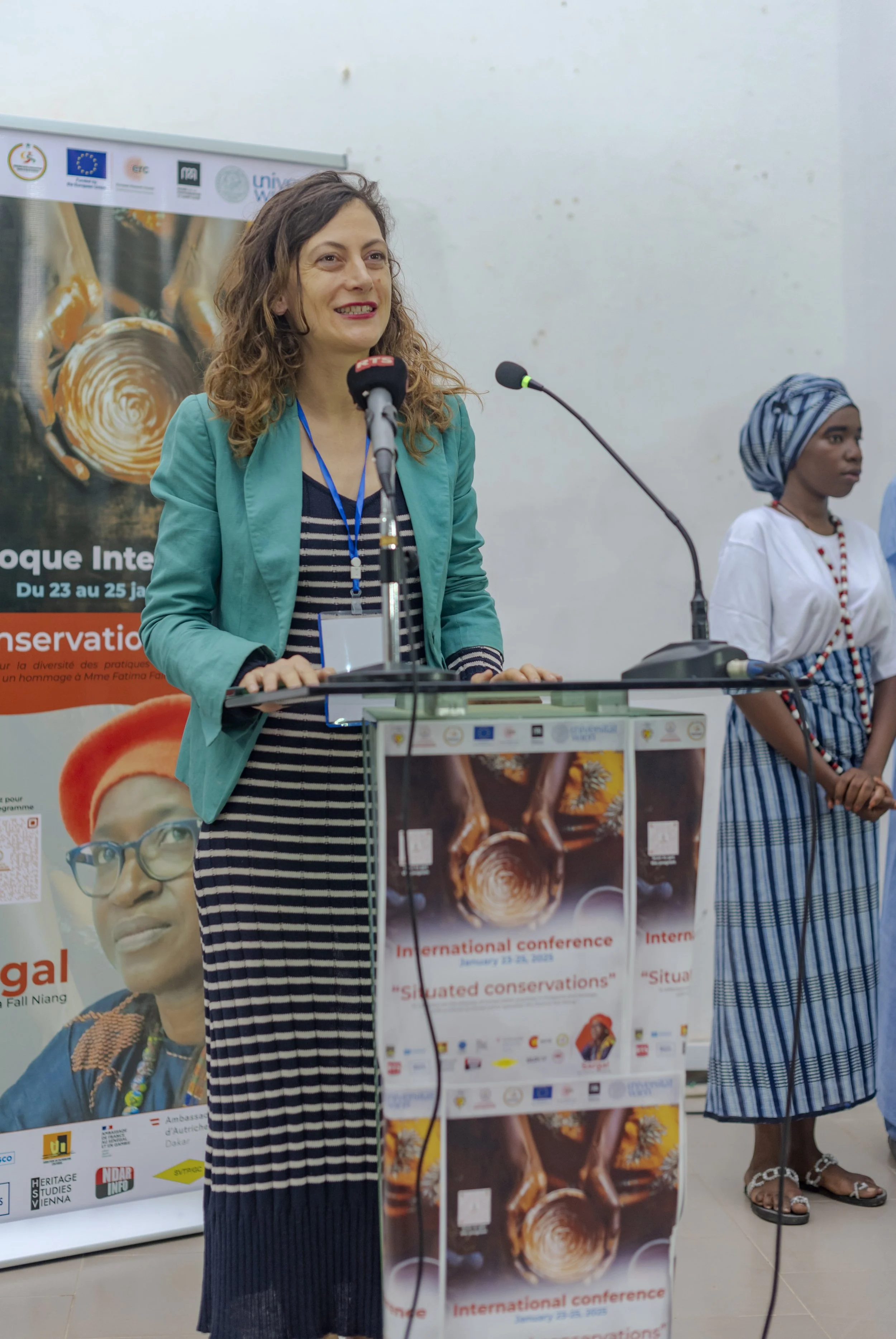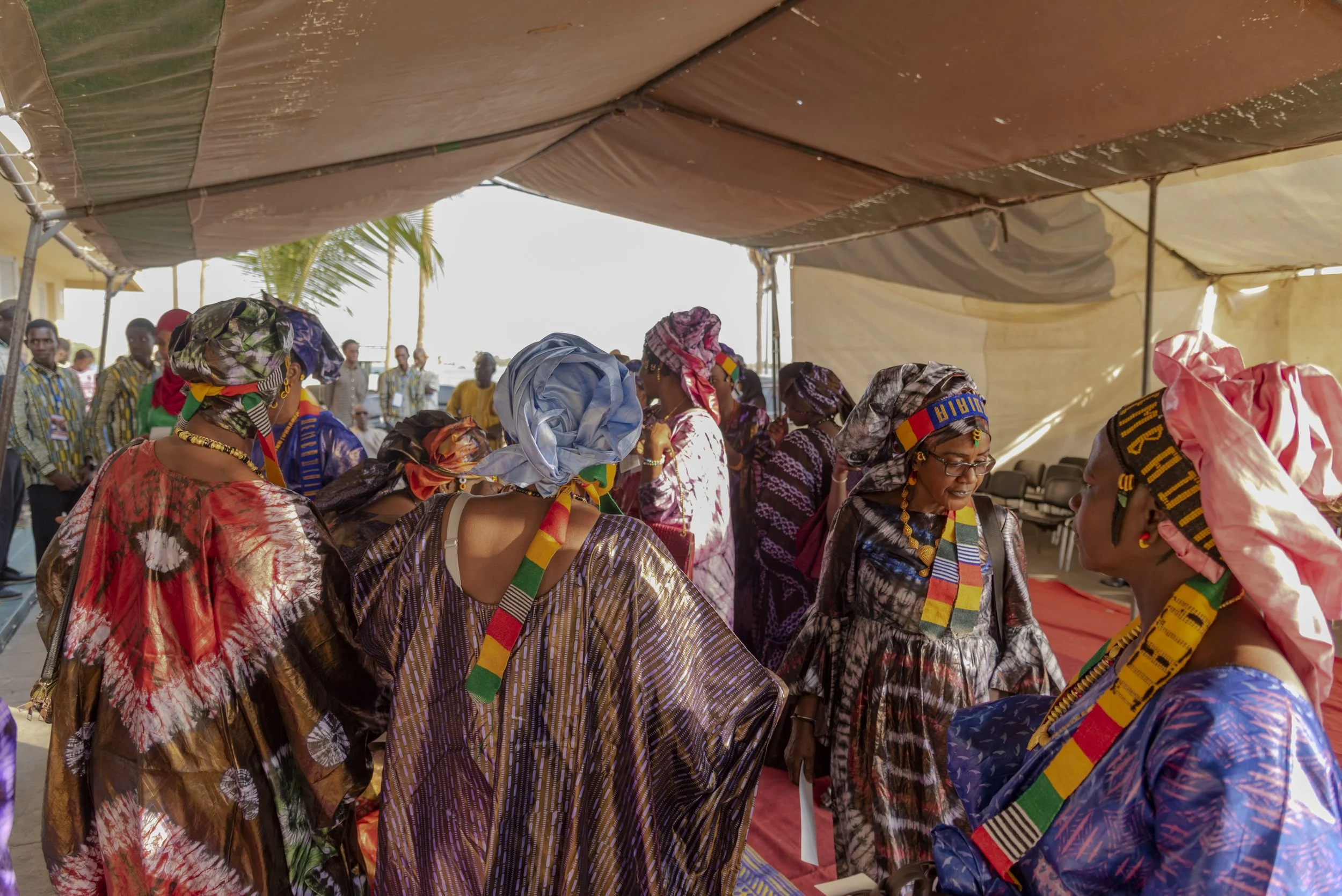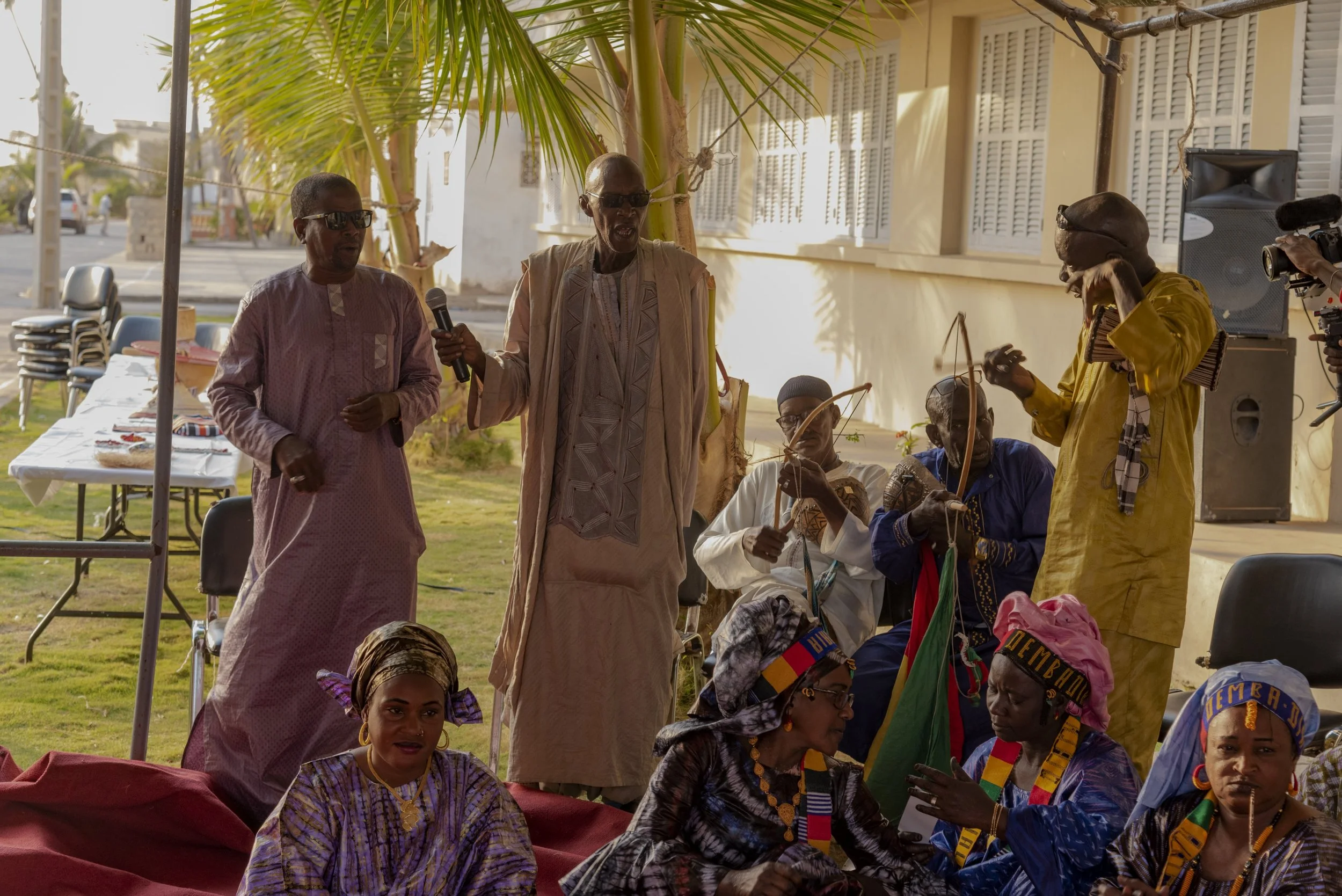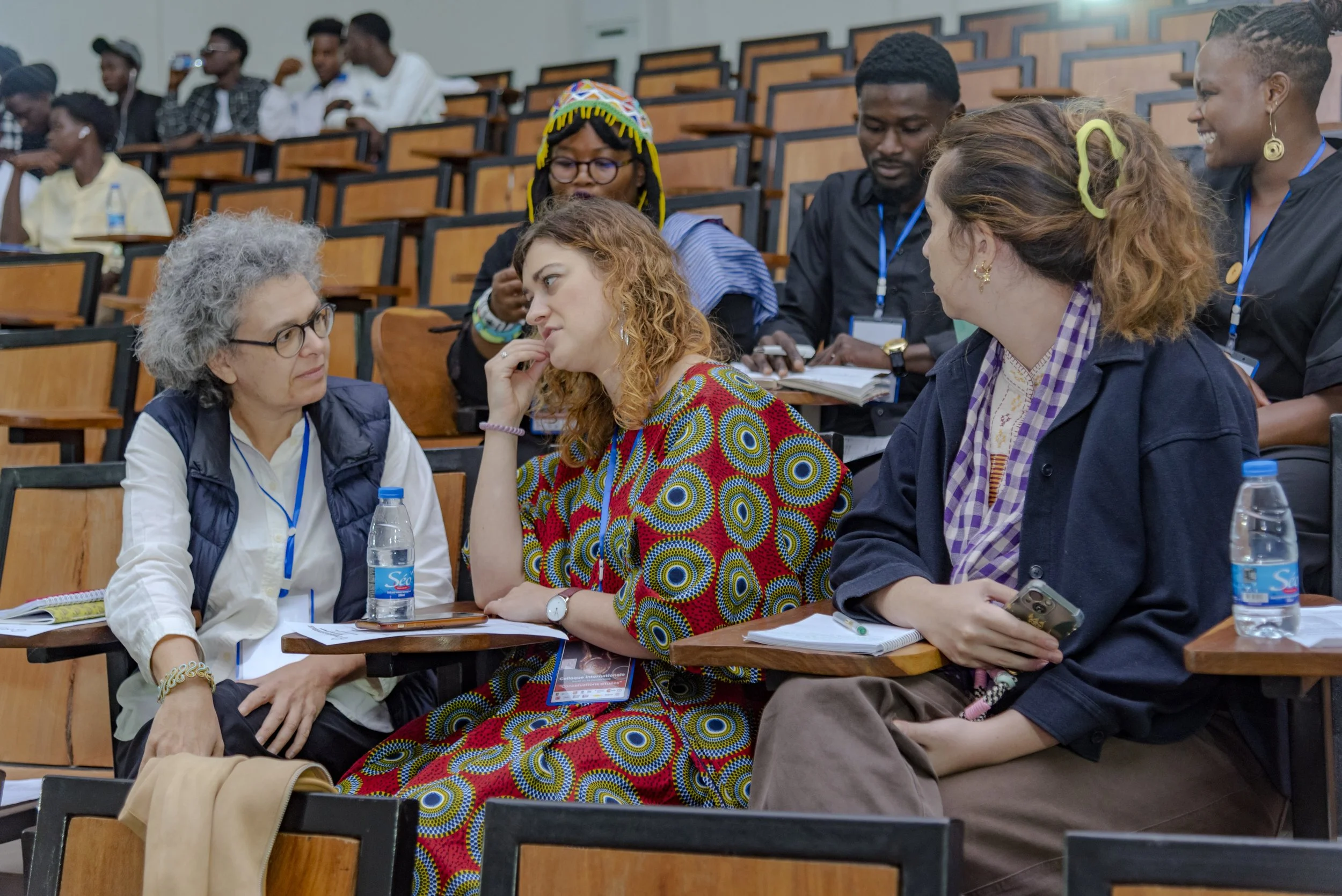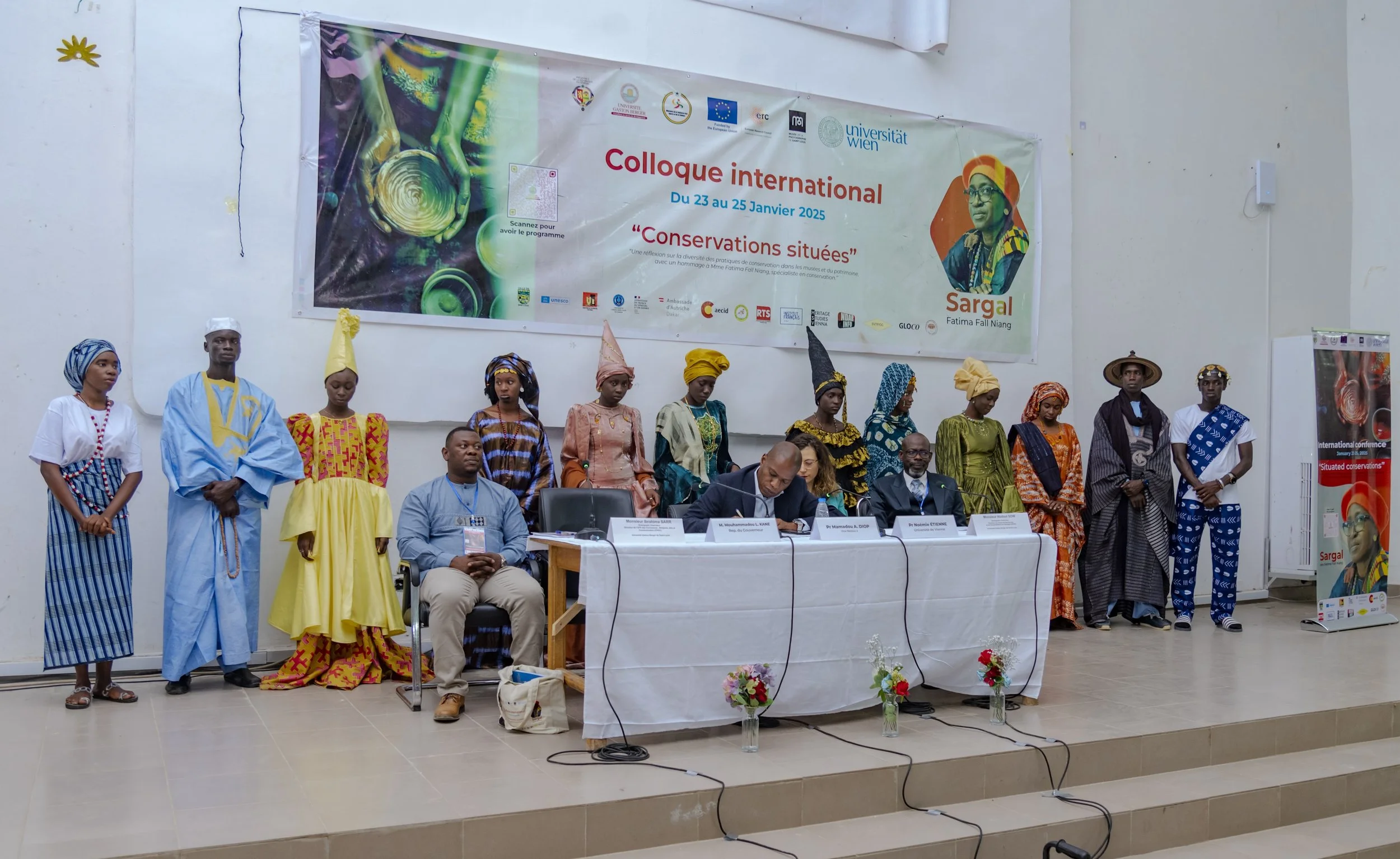Bridging Worlds: Reflections on the International Conference “Situated Conservations” in Senegal
Traveling to Senegal for the International Conference on Situated Conservations was an eye-opening journey for our Viennese participants. The event went beyond a typical academic gathering, blending scholarship with cultural immersion. Here, our team members share their insights and experiences from this inspiring exchange.
For our team, traveling to Senegal was an immersive experience that transcended traditional conference formats. Noémie Etienne reflected,
"I am passionate about bridging the gap between universities, museums, and the wider public—between academia and everyday life. How can we make our discussions more relevant to a broader audience? How can we create a welcoming space?"
She noted that "the inclusion of music and dance, woven into the event daily—sometimes multiple times a day—played a crucial role in shaping and enriching the experience." Encounters with local artists and craftspeople before the event also added depth, grounding discussions in real-world connections.
Integrating Cultural Heritage into Academic Discourse
Anna-Marie Kroupová described how the conference differed from typical Western academic events:
"Not only was scientific discourse at the center, but intangible cultural heritage was seamlessly integrated into the program—dance, song, and other artistic expressions provided us with a break from academic contributions while also serving as a constant reminder of the true subject of our research."
She highlighted the dynamic debates about new institutional structures in Senegal, emphasizing urgent questions such as "who should (or should not) have a say in their development, what role traditional communities should play, whose knowledge and perspectives are considered, and how fair representation can be ensured without mere knowledge exploitation."
From left to right: Renée Riedler, Anna-Marie Kroupová and Alisa Santikarn and behind them Mabafokeng Hoeane, Cheikh Mouhamed Ibrahima Sock and Mutanu Kyany’a on the first day of the conference in the auditorium of Gaston-Berger-University, St. Louis, Senegal.
The Power of Hands-On Experiences
Maeva Pimo found the hands-on experiences particularly meaningful:
"One of the most interesting aspects of research is the fieldwork. Being able to touch the realities firsthand. Leaving books, notebooks, and even my brain aside to 'live' heritage differently. This is what I take away from this experience in Senegal."
She noted that engaging with artists and craftspeople deepened her understanding: "Encouraging museums to collaborate with artists and artisans for the perpetuation of skills and the creation of works that tell even more deeply about life, history, and art!" She also observed a shift in museum narratives: "We have moved away from the redundant discourse on slavery to a new aspect that changes the image of our museums."
A Celebration of Cultural Exchange
Ultimately, the International Conference on Situated Conservations was more than an academic event—it was a celebration of cultural exchange, an exploration of new ways to think about conservation, and a powerful reminder of the importance of collaboration across disciplines and borders. As Noémie Etienne put it,
"Ultimately, this was a truly Senegalese event, with the University of Vienna and the GloCo project serving as partners and facilitators."
Stay tuned for our next post, where we share more about what our team of researchers learned from craftspeople and artists about conservation in Senegal.
Photo Credits: Centre de Recherches et de Documentation du Sénégal

